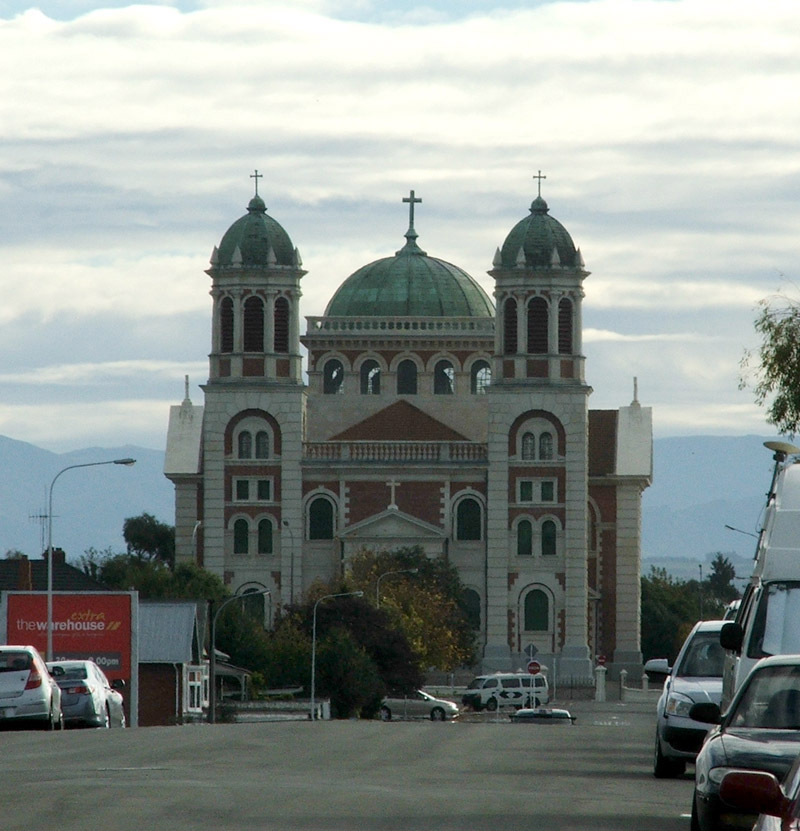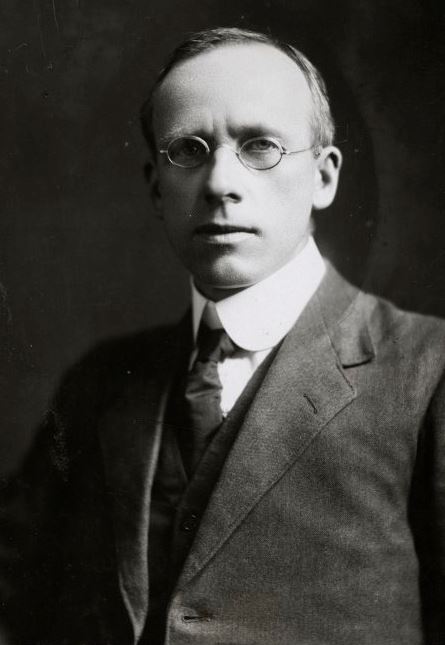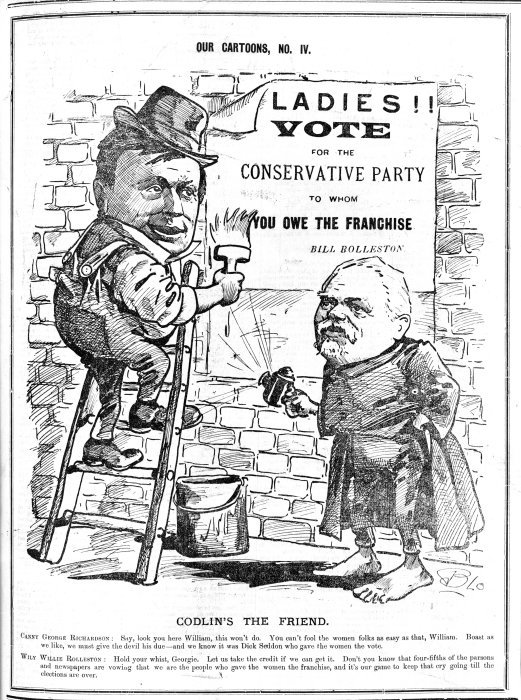|
Clyde Carr
Clyde Leonard Carr (14 January 1886 – 18 September 1962) was a New Zealand politician of the Labour Party, and was a minister of the Congregational Church. Biography Early life and career Carr was born in Ponsonby, Auckland in 1886. His father was the Rev. Thomas Goodwill Carr (died 1935). Carr was educated at Nelson College from 1899 to 1902.''Nelson College Old Boys' Register, 1856–2006'', 6th edition Ordained as a minister in 1915, he was on the Christchurch City Council between 1923 and 1927 and the Hospital Board in the 1920s, after working in commerce and banking. Carr was also committed to animal welfare and in April 1936 he was elected to the office of President of the federated Societies for the Prevention of Cruelty to Animals. Political career Carr joined the Labour Party in the early 1920s. He unsuccessfully sought the Labour nomination in the in the , , and electorates. He moved to Timaru to contest the in the electorate; he had no prior fa ... [...More Info...] [...Related Items...] OR: [Wikipedia] [Google] [Baidu] |
The Reverend
The Reverend is an style (manner of address), honorific style most often placed before the names of Christian clergy and Minister of religion, ministers. There are sometimes differences in the way the style is used in different countries and church traditions. ''The Reverend'' is correctly called a ''style'' but is often and in some dictionaries called a title, form of address, or title of respect. The style is also sometimes used by leaders in other religions such as Judaism and Buddhism. The term is an anglicisation of the Latin ''reverendus'', the style originally used in Latin documents in medieval Europe. It is the gerundive or future passive participle of the verb ''revereri'' ("to respect; to revere"), meaning "[one who is] to be revered/must be respected". ''The Reverend'' is therefore equivalent to ''The Honourable'' or ''The Venerable''. It is paired with a modifier or noun for some offices in some religious traditions: Lutheran archbishops, Anglican archbishops, and ... [...More Info...] [...Related Items...] OR: [Wikipedia] [Google] [Baidu] |
Timaru
Timaru (; mi, Te Tihi-o-Maru) is a port city in the southern Canterbury Region of New Zealand, located southwest of Christchurch and about northeast of Dunedin on the eastern Pacific coast of the South Island. The Timaru urban area is home to people, and is the largest urban area in South Canterbury, and the second largest in the Canterbury Region overall, after Christchurch. The town is the seat of the Timaru District, which includes the surrounding rural area and the towns of Geraldine, Pleasant Point and Temuka, which combined have a total population of . Caroline Bay beach is a popular recreational area located close to Timaru's main centre, just to the north of the substantial port facilities. Beyond Caroline Bay, the industrial suburb of Washdyke is at a major junction with State Highway 8, the main route into the Mackenzie Country. This provides a road link to Pleasant Point, Fairlie, Twizel, Lake Tekapo, Aoraki / Mount Cook and Queenstown. Timaru has been built ... [...More Info...] [...Related Items...] OR: [Wikipedia] [Google] [Baidu] |
University Of Canterbury
The University of Canterbury ( mi, Te Whare Wānanga o Waitaha; postnominal abbreviation ''Cantuar.'' or ''Cant.'' for ''Cantuariensis'', the Latin name for Canterbury) is a public research university based in Christchurch, New Zealand. It was founded in 1873 as Canterbury College, the first constituent college of the University of New Zealand. It is New Zealand's second-oldest university, after the University of Otago, itself founded four years earlier in 1869. Its original campus was in the Christchurch Central City, but in 1961 it became an independent university and began moving out of its original neo-gothic buildings, which were re-purposed as the Christchurch Arts Centre. The move was completed on 1 May 1975 and the university now operates its main campus in the Christchurch suburb of Ilam. The university is well known for its Engineering and Science programmes, with its Civil Engineering programme ranked 9th in the world (Academic Ranking of World Universities, 2021). ... [...More Info...] [...Related Items...] OR: [Wikipedia] [Google] [Baidu] |
Clyde And Laurie's Headstone
Clyde may refer to: People * Clyde (given name) * Clyde (surname) Places For townships see also Clyde Township Australia * Clyde, New South Wales * Clyde, Victoria * Clyde River, New South Wales Canada * Clyde, Alberta * Clyde, Ontario, a town in North Dumfries, Regional Municipality of Waterloo, Ontario * Clyde Township, a geographic township in the municipality of Dysart et al, Ontario * Clyde River, Nunavut New Zealand * Clyde, New Zealand ** Clyde Dam Scotland * Clydeside * River Clyde * Firth of Clyde United States * Clyde, California, a CDP in Contra Costa County * Clyde, Georgia * Clyde Township, Whiteside County, Illinois * Clyde, Iowa * Clyde, Kansas * Clyde, Michigan * Clyde Township, Allegan County, Michigan * Clyde Township, St. Clair County, Michigan * Clyde, New Jersey * Clyde, New York * Clyde, North Carolina * Clyde, North Dakota * Clyde, Ohio ** Clyde cancer cluster * Clyde, Pennsylvania * Clyde, South Carolina * Clyde, Texas * Clyde River (Vermont) * Clyde ... [...More Info...] [...Related Items...] OR: [Wikipedia] [Google] [Baidu] |
Victoria University Press
Te Herenga Waka University Press or THWUP (formerly Victoria University Press) is the book publishing arm of Victoria University of Wellington, located in Wellington, New Zealand. As of 2022, the press had published around 800 books. History Victoria University Press was founded in the early 1970s, with a single staff member. Fergus Barrowman joined it in 1985 as publisher and remains in charge of the press. By 2005 the staff had grown to four and the press was publishing on average 15 titles a year. By 2011 this had grown to 25 titles annually, including six or seven poetry books. In 2019, Victoria University adopted the Māori name Te Herenga Waka ("the mooring place of canoes"), which previously just referred to the university marae. To align with the university's name, the press changed its name as of 1 January 2022 to Te Herenga Waka University Press. It adopted a new logo, designed by Philip Kelly and Rangi Kipa, which uses the initials THW to evoke a whare whakairo (car ... [...More Info...] [...Related Items...] OR: [Wikipedia] [Google] [Baidu] |
Speaker Of The New Zealand House Of Representatives
Speaker may refer to: Society and politics * Speaker (politics), the presiding officer in a legislative assembly * Public speaker, one who gives a speech or lecture * A person producing speech: the producer of a given utterance, especially: ** In poetry, the literary character uttering the lyrics of a poem or song, as opposed to the author writing the words of that character; see Character (arts) Electronics * Loudspeaker, a device that produces sound ** Computer speakers Computer speakers, or multimedia speakers, are speakers sold for use with computers, although usually capable of other audio uses, e.g. for an MP3 player. Most such speakers have an internal amplifier and consequently require a power source, whic ..., speakers sold for use with computers ** Speaker driver, the essential electromechanical element of the loudspeaker Arts, entertainment and media * Los Speakers (or "The Speakers"), a Colombian rock band from the 1960s * The Speaker (periodical), ''The Speaker'' ... [...More Info...] [...Related Items...] OR: [Wikipedia] [Google] [Baidu] |
Chairman Of Committees (New Zealand House Of Representatives)
The Chairman of Committees was an elected position of the New Zealand House of Representatives. The role existed between 1854 and 1992. The roles of the Chairman of Committees were to deputise for the Speaker, and to chair the House when it was in committee. The role is now carried out by the Deputy Speaker. The role of Chairman of Committees also existed for the Legislative Council. Establishment The position was established during the first session of the 1st New Zealand Parliament. Parliament first convened on 24 May 1854, and on 21 June of that year, Auckland lawyer Frederick Merriman was elected as its first Chairman of Committees. The role also existed for the Legislative Council, was established in 1865 and first held by Mathew Richmond. Role The chief role of the Chairman of Committees was to chair the House when it was in committee (i.e., considering a bill at committee stage) or preside in the absence of the Speaker or when the Speaker so requested. These arrangemen ... [...More Info...] [...Related Items...] OR: [Wikipedia] [Google] [Baidu] |
Michael Joseph Savage
Michael Joseph Savage (23 March 1872 – 27 March 1940) was a New Zealand politician who served as the 23rd prime minister of New Zealand, heading the First Labour Government from 1935 until his death in 1940. Savage was born in the Colony of Victoria (present-day Australia), and emigrated to New Zealand in 1907. A labourer, he became a trade unionist, and in 1910 was elected president of the Auckland Trades and Labour Council. Savage supported the formation of the New Zealand Labour Party in July 1916. He was active in local politics before his election to the House of Representatives in 1919, as one of eight Labour members returned in that election. Savage was elected unopposed as Labour Party Leader in 1933. Savage led the Labour Party to its first ever electoral victory in the . He won public support for his government's economic recovery policies and social welfare programme. His popularity assured the Labour Party of an even more significant electoral victory in the ... [...More Info...] [...Related Items...] OR: [Wikipedia] [Google] [Baidu] |
1940 New Zealand Labour Party Leadership Election
The New Zealand Labour Party leadership election, 1940 was held on 4 April 1940 to choose the fourth leader of the New Zealand Labour Party. The election was won by Wellington Central MP Peter Fraser. It followed the death of incumbent Labour leader and Prime Minister Michael Joseph Savage. Background Despite governing with a healthy majority, Labour was facing antagonism from within its own ranks. The Labour Party had been overtly socialist at its inception, it had gradually drifted away from its earlier radicalism under Savage. Labour MP, John A. Lee, whose outlooks were a combination of socialism and social credit theory, arose as a vocal critic of the party's leadership, accusing it of acting dictatorially and of betraying the party's founding ideals. After a long and bitter dispute, Lee was expelled from the party by Fraser, establishing the breakaway Democratic Labour Party. Only one other sitting Labour MP, Bill Barnard joined, though many others were sympathetic and g ... [...More Info...] [...Related Items...] OR: [Wikipedia] [Google] [Baidu] |
Peter Fraser
Peter Fraser (; 28 August 1884 – 12 December 1950) was a New Zealand politician who served as the 24th prime minister of New Zealand from 27 March 1940 until 13 December 1949. Considered a major figure in the history of the New Zealand Labour Party, he was in office longer than any other Labour prime minister, and is to date New Zealand's fourth- longest-serving head of government. Born and raised in the Scottish Highlands, Fraser left education early in order to support his family. While working in London in 1908, Fraser joined the Independent Labour Party, but unemployment led him to emigrate to New Zealand in 1910. On arrival in Auckland, he gained employment as a wharfie and became involved in union politics upon joining the New Zealand Socialist Party. In 1916, Fraser was involved in the foundation of the unified Labour Party. He spent one year in jail for sedition after speaking out against conscription during the First World War. In 1918, Fraser won a Wellington by ... [...More Info...] [...Related Items...] OR: [Wikipedia] [Google] [Baidu] |
Canterbury, New Zealand
Canterbury ( mi, Waitaha) is a region of New Zealand, located in the central-eastern South Island. The region covers an area of , making it the largest region in the country by area. It is home to a population of The region in its current form was established in 1989 during nationwide local government reforms. The Kaikoura District joined the region in 1992 following the abolition of the Nelson-Marlborough Regional Council. Christchurch, the South Island's largest city and the country's second-largest urban area, is the seat of the region and home to percent of the region's population. Other major towns and cities include Timaru, Ashburton, Rangiora and Rolleston. History Natural history The land, water, flora, and fauna of Waitaha/Canterbury has a long history stretching from creation of the greywacke basement rocks that make up the Kā Tiritiri o te Moana/Southern Alps to the arrival of the first humans. This history is linked to the creation of the earth, the s ... [...More Info...] [...Related Items...] OR: [Wikipedia] [Google] [Baidu] |
William Rolleston
William Rolleston (19 September 1831 – 8 February 1903) was a New Zealand politician, public administrator, educationalist and Canterbury provincial superintendent. Early life Rolleston was born on 19 September 1831 at Maltby, Yorkshire as the 9th child of the Rev. George Rolleston and Anne Nettleship. His brother was the physician and zoologist George Rolleston. He attended Rossall School and Emmanuel College, where he graduated in 1855 with second class honours in the classical tripos. He had intended to move to Canterbury but his father advised against it so he took up tutoring. However, this was merely a means of raising enough money to leave England in order to reject 'Conservatives and Ecclesiastics'. Political career Rolleston first joined the Canterbury Provincial Council when he was appointed to the Canterbury Executive Council on 4 December 1863. His tenure on the Executive Council finished on 16 June 1865. On 23 January 1864, he was elected as a provincial counci ... [...More Info...] [...Related Items...] OR: [Wikipedia] [Google] [Baidu] |







